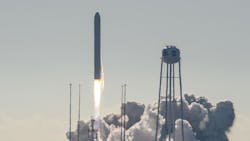Air Force readies shortwave infrared sensors for satellites to reveal materials and lasers on the ground.
WASHINGTON – The U.S. Air Force Rogue CubeSats will launch from the International Space Station in early 2020 to test new shortwave infrared (SWIR) sensors that can see through smoke and haze, as well as process the gathered imagery. Breaking Defense reports. Continue reading original article
The Military & Aerospace Electronics take:
20 Nov. 2019 -- The two satellites carry visible-light and infrared sensors, as well as a high-speed laser communications downlink. The experiment also will demonstrate the new SWIR sensor as a potential capability for future mission applications.
SWIR sensors can see through smoke and haze, night and day. They can detect and differentiate among types of gas and chemicals on the surface, and detect invisible laser beams.
SWIR cameras based on indium gallium arsenide (InGaAS) require no cryogenic cooling, which means they are lightweight enough for small satellites. Further, because SWIR is a reflected energy like visible light, it can identify objects at night without additional illumination.
Related: Shortwave infrared laser detection and tracking on the battlefield
John Keller, chief editor
Military & Aerospace Electronics
